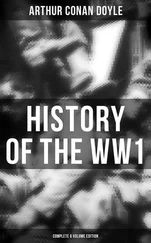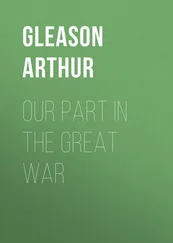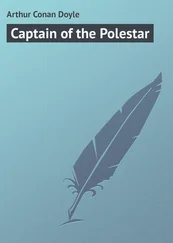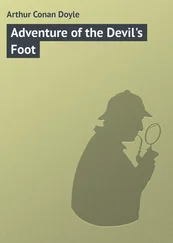About eight in the morning news of the perilous situation had reached the 19th Brigade. The 1st Middlesex, under Colonel Rowley, was hurried forward, followed by the 1st Scottish Rifles. Marching rapidly upon the firing, after the good old Maxim, the Middlesex found themselves in a position to command the German batteries. After two minutes of rapid fire it was seen that the enemy had left their guns. Eight guns were captured, two of them still loaded. About a dozen German gunners lay dead or wounded round them. Twenty-five of the escort were captured, as was an ambulance with some further prisoners a mile in the rear. The cavalry, notably the 11th Hussars, endeavoured to follow up the success, but soon found themselves in the presence of superior forces. New wheels and new wheelers were found for the injured guns, and Battery L came intact out of action—intact save for the brave acolytes who should serve her no more. Bradbury, Nelson, and Doxell had the Victoria Cross, and never was it better earned. The battery itself was recalled to England to refit and the guns were changed for new ones. It is safe to say that for many a long year these shrapnel-dinted thirteen-pounders will serve as a monument of one of those deeds which, by their self-sacrifice and nobility, do something to mitigate the squalors and horrors of war.
The success was gained at the cost of many valuable lives. Not only had the personnel of the battery been destroyed, but the Bays lost heavily, and there were some casualties among the rest of the brigade who had come up in support. The 5th Dragoon Guards had 50 or 60 casualties, and lost its admirable commander, Colonel Ansell, who was shot down in a flanking movement which he had initiated. Major Cawley, of the staff, also fell. The total British loss was not far short of 500 killed and wounded, but the Germans lost heavily also, and were compelled to abandon their guns. 1
The German advance guards were particularly active upon this day, September 1, the anniversary of Sedan. Although the Soissons Bridge had been destroyed they had possession of another at Vic, and over this they poured in pursuit of the First Corps, overtaking about 8 A.M. near Villars-Cotteret the rearguard, consisting of the Irish Guards and the 2nd Coldstream. The whole of the 4th Guards Brigade was drawn into the fight, which resolved itself into a huge rifle duel amid thick woods, Scott-Kerr, their Brigadier, riding up and down the firing line. The Guards retired slowly upon the 6th Infantry Brigade (Davies), which was aided by Lushington’s 41st Brigade of Artillery, just south of Pisseleux. The Germans had brought up many guns, but could make no further progress, and the British position was held until 6 P.M., when the rearguard closed up with the rest of the Army. Lushington’s guns had fought with no infantry in front of them, and it was a matter of great difficulty in the end to get them off, but it was accomplished by some very brilliant work under an infernal fire. After this sharp action, in which Colonel Morris of the Irish Guards lost his life, the retreat of the First Army Corps was not seriously interfered with. The losses at that date in this corps amounted to 81 officers and 2180 of all ranks.
So much attention is naturally drawn to the Second Army Corps, which both at Mons and at Le Cateau had endured most of the actual fighting, that there is some danger of the remarkable retreat effected by the First Corps having less than its fair share of appreciation. The actual fighting was the least of the difficulties. The danger of one or both flanks being exposed, the great mobility of the enemy, the indifferent and limited roads, the want of rest, the difficulty of getting food cooked, the consequent absolute exhaustion of the men, and the mental depression combined to make it an operation of a most trying character, throwing an enormous strain upon the judgment and energy of General Haig. who so successfully brought his men intact and fit for service into a zone of safety.
On the night of September 1, the First and Second Army Corps were in touch once more at Betz, and were on the move again by 2 A.M. upon the 2nd. On this morning the German advance was curiously interlocked with the British rear, and four German guns were picked up by the cavalry near Ermenonville. They are supposed to have been the remaining guns of the force which attacked Battery L at Néry. The movements of the troops during the day were much impeded by the French refugees, who thronged every road in their flight before the German terror. In spite of these obstructions, the rearward services of the Army—Supply columns, ammunition columns, and medical transport—were well conducted, and the admiration of all independent observers. The work of all these departments had been greatly complicated by the fact that, as the Channel ports were now practically undefended and German troops, making towards the coast, had cut the main Calais-Boulogne line at Amiens, the base had been moved farther south from Havre to St. Nazaire, which meant shifting seventy thousand tons of stores and changing all arrangements. In spite of this the supplies were admirable. It may safely be said that if there is one officer more than another for whom the whole British Army felt a glow of gratitude, it was for Sir William Robertson, the Chief of the Commissariat, who saw that the fighting man was never without his rations. Greatly also did they appreciate the work of his subordinates, who, wet or fine, through rainfall or shell-fall, passed the food forward to the weary men at the front.
A difficult movement lay in front of the Army which had to cross the Marne, involving a flank march in the face of the enemy. A retirement was still part of the general French scheme of defence, and the British Army had to conform to it, though it was exultantly whispered from officer to sergeant and from sergeant to private that the turn of the tide was nearly due. On this day it was first observed that the Germans, instead of pushing forward, were swinging across to the east in the direction of Château-Thierry. This made the task of the British a more easy one, and before evening they were south of the Marne and had blown up the bridges. The movement of the Germans brought them down to the river, but at a point some ten miles east of the British position. They were reported to be crossing the river at La Ferté, and Sir John French continued to fall back towards the Seine, moving after sundown, as the heat had been for some days very exhausting. The troops halted in the neighbourhood of Presles, and were cheered by the arrival of some small drafts, numbering about 2000, a first installment towards refilling the great gaps in the ranks, which at this date could not have been less than from 12,000 to 15,000 officers and men.
Here for a moment this narrative may be broken, since it has taken the Army to the farthest point of its retreat and reached that moment of advance for which every officer and man, from Sir John French to the drummer-boys, was eagerly waiting. With their left flank resting upon the extreme outer forts of Paris, the British troops had finally ended a retreat which will surely live in military history as a remarkable example of an army retaining its cohesion and courage in the presence of an overpowering adversary, who could never either cut them off or break in their rearguard. The British Army was a small force when compared with the giants of the Continent, but when tried by this supreme test it is not mere national complacency for us to claim that it lived up to its own highest traditions. “It was not to forts of steel and concrete that the Allies owed their strength,” said a German historian, writing of this phase of the war, “but to the magnificent qualities of the British Army.” We desire no compliments at the expense of our brothers-in-arms, nor would they be just, but at least so generous a sentence as this may be taken as an advance from that contemptuous view of the British Army with which the campaign had begun.
Читать дальше












